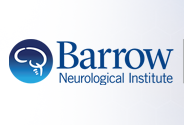Study of certain easily available biochemical markers in prognostication in severe traumatic brain injury requiring surgery.
Document Type
Article
Abstract
BACKGROUND: This study aimed to identify easily available prognostic factors in severe traumatic brain injury (TBI) patients undergoing craniotomy.
METHODS: We retrospectively analyzed the clinical characteristics (age, sex, Glasgow coma scale score, cause of TBI, and oral antithrombotic drug use), laboratory parameters (hemoglobin, sodium, C-reactive protein, D-dimer, activated partial thromboplastin time, prothrombin time-international normalized ratio, and glucose-potassium [GP] ratio), and neuroradiological findings of 132 patients who underwent craniotomy for severe TBI in our hospital between January 2015 and December 2021. The patients were divided into two groups: Those with fatal clinical outcomes and those with non-fatal clinical outcomes, and compared between the two groups.
RESULTS: The patients comprised 79 (59.8%) male and 53 (40.2%) female patients. Their mean age was 67 ± 17 years (range, 16-94 years). Computed tomography revealed acute subdural hematoma in 108 (81.8%) patients, acute epidural hematoma in 31 (23.5%), traumatic brain contusion in 39 (29.5%), and traumatic subarachnoid hemorrhage in 62 (47.0%). All 132 patients underwent craniotomy, and 41 eventually died. There were significant differences in the D-dimer, GP ratio, and optic nerve sheath diameter between the groups (all
CONCLUSION: The GP ratio and D-dimer were significantly associated with poor outcomes of TBI. A GP ratio of >42 could be a predictor of a fatal outcome of TBI.
Publication Date
1-1-2023
Publication Title
Surg Neurol Int
ISSN
2229-5097
Volume
14
First Page
410
Last Page
410
PubMed ID
38213429
Digital Object Identifier (DOI)
10.25259/SNI_544_2023
Recommended Citation
Tsuchiya, Ryosuke; Ooigawa, Hidetoshi; Kimura, Tatsuki; Tabata, Shinya; Maeda, Takuma; Sato, Hiroki; Suzuki, Kaima; Ohara, Yasuhiro; Ooya, Yoshitaka; Nemoto, Manabu; and Kurita, Hiroki, "Study of certain easily available biochemical markers in prognostication in severe traumatic brain injury requiring surgery." (2023). Translational Neuroscience. 2416.
https://scholar.barrowneuro.org/neurobiology/2416


